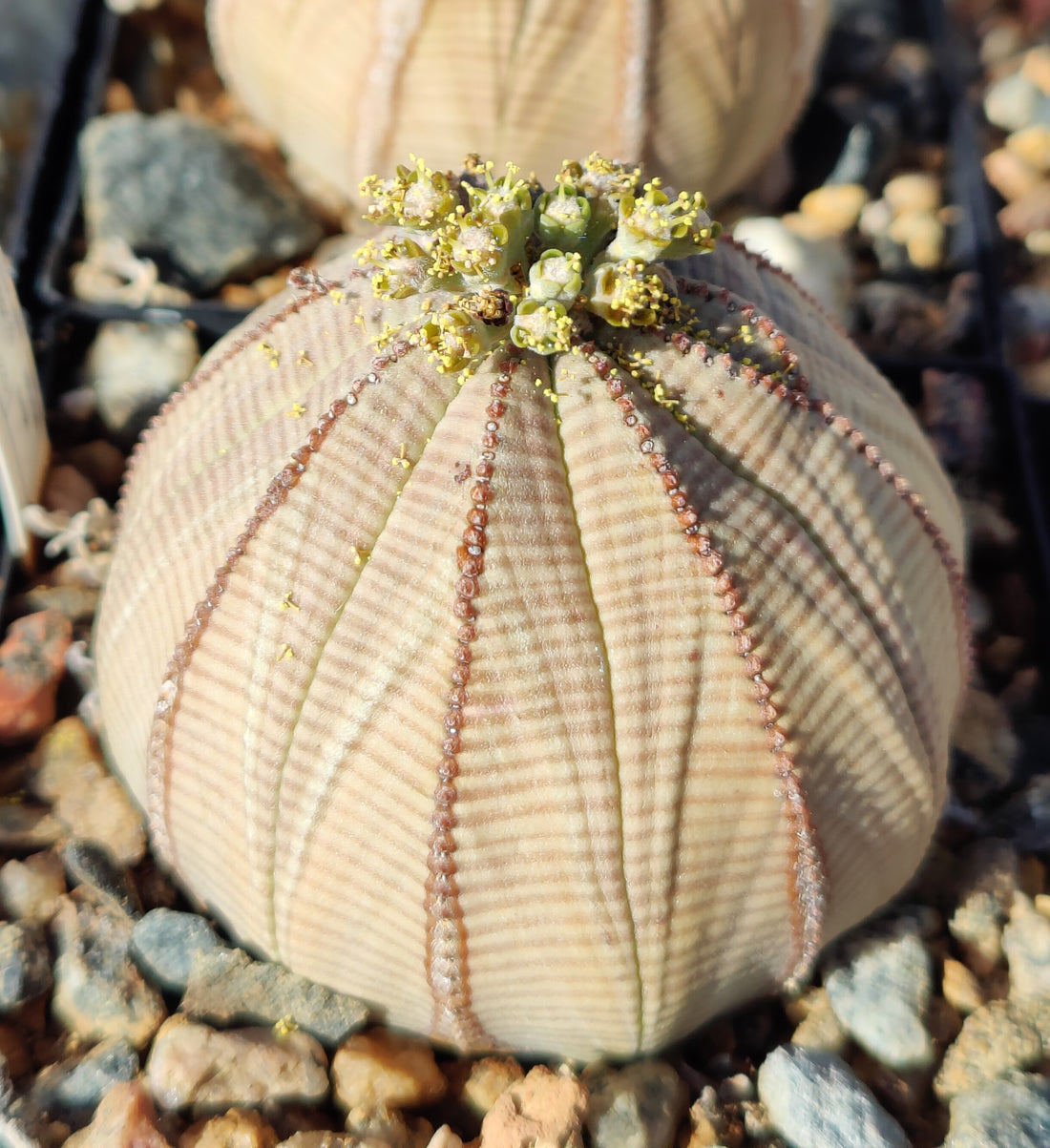When we talk about cacti and succulents, it is not always so easy to distinguish between what is what. But simply put, all cacti are succulents, but not all succulents are cacti. In fact, there are far more succulents that are not cacti than there are cacti.
Cacti belong to the plant family Cactaceae, while succulents in general are plants that store water in the stem and/or leaves. Common sedum (Sedum), which you can find almost all across the world is a succulent. Sempervivum, commonly known as houseleeks or hen and chicks, are also succulent plants. Euphorbia are members of the spurge family, and many of these can resemble cacti. So-called "Cowboy cactus" which is common to find in many garden centers is usually Euphorbia trigona. However, these have nothing to do with cacti. Other members of the genus, such as Euphorbia obesa can also be confused with cacti.
In the pictures below, at the top you can see two different Sempervivum planted in beds. At the bottom is Euphorbia obesa .


What characterizes cacti as a family is primarily the areole. The areole, in its most basic form, is a modified shoot that can produce spines and hairs (which in turn are both modified leaves), as well as flowers and new shoots. Sometimes all four are produced from the same areole (but not necessarily at the same time). Only members of the cactus family have areoles, and is therefore perhaps the most important common denominator for the family.
The picture below shows a Gymnocalycium ferocius with areoles full of strong spines and some hair. From time to time the same areoles will produce flowers. The areoles can also produce new side shoots.

The natural distribution of the cactus family is in North and South America. There is one exception and it is a species in the genus Rhipsalis, which has spread naturally to Africa and further to parts of Asia. In some countries outside North and South America, certain cactus species have been spread by humans and can present environmental challenges. This applies in particular to some of the species in the genus Opuntia . In the cactus family, there are approx. 2,500 species and subspecies. But this number varies as different biologists and taxonomists have different ideas about which species and subspecies should be accepted.
Most cacti have spines, but not all. A few have true leaves. Many cacti grow in columnar form and can grow as large and tall as trees, while others are so small that they are barely bigger than a thumb. Cacti range from Patagonia in South America to Canada in North America. Some grow in rainforests at the Equator, while some grow 4,000 meters above sea level in the Andes.
Succulents, on the other hand, can be found all over the world. Agave is a succulent family that grows wild from North America down to South America. Aloe which is similar to Agave grows wild in Africa and eastwards in Asia. We have several different wild-growing succulents in Norway, such as Sedum. In the picture below, you can see a coastal sedum (Sedum anglicum) planted out in a bed.

Lithops (pictured below) is a genus of succulents belonging to the family Aizoaceae, which is a large family consisting of many genera (all succulents). Lithops are often called "living stones" as they look very much like stones - especially in nature where they grow close to the ground, they can blend in with gravel and pebbles. Common Midday Flower (Dorotheanthus bellidiformis, now renamed Cleretum bellidiforme) is a succulent in the family Aizoceae. This family has its greatest distribution in South Africa, but members also occur in North Africa, around the Mediterranean, in Asia, and in North and South America.


